Historical images
| What happened this month | Image | Title | Description | Posted |
|---|---|---|---|---|
| This month 50 years ago… | 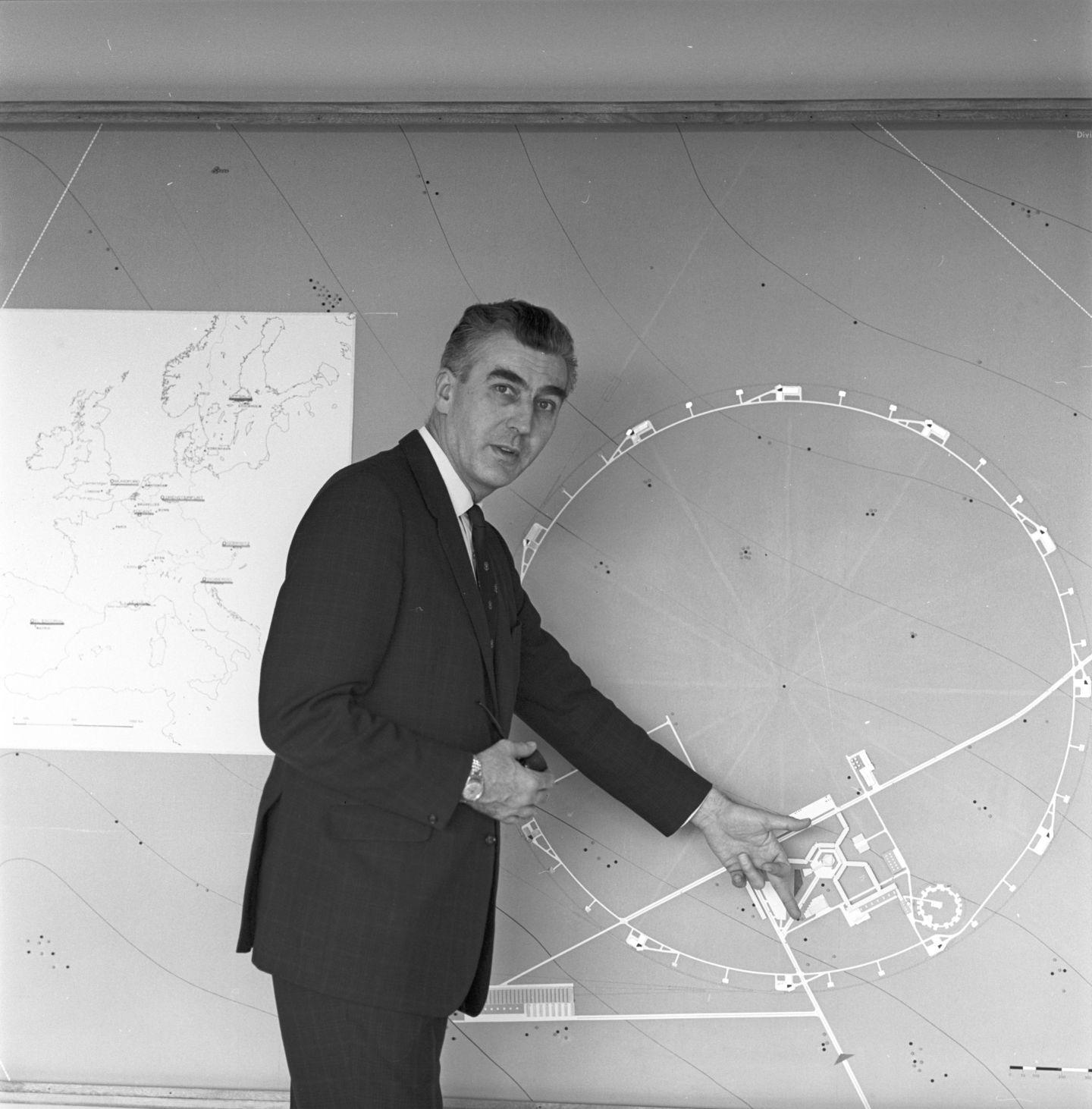
|
April 1969 – John Adams, Director of the 300 GeV project | By 1 April 1969, John Adams was ready to take up his new role, as Director of CERN’s 300 GeV project, full-time. This photo shows him presenting plans for the new accelerator a few months earlier – you can read the minutes of the 16 January 1969 Committee of Council meeting, largely devoted to discussion of the project, here. At this time it was not even clear in which country the new machine would be built. By showing that it made most financial and technological sense to build the Super Proton Synchrotron next to the existing CERN site, Adams was able to break the deadlock between member states. |
|
| This month 60 years ago… | 
|
March 1959 – CERN’s D-G strongly in favour of welcoming Soviet scientists | The first informal contacts between Soviet and CERN scientists probably took place at the Atoms for Peace conference in Geneva in September 1955. Exchange visits between scientists from CERN and the Joint Institute for Nuclear Research (JINR) were suggested in 1957, but there was little progress until N. Bogolubov of JINR raised the subject again on 4 February 1959. CERN’s director-general C. Bakker replied on 5 March that he was, in principle, strongly in favour of the idea, and he began to look into the practicalities. (See their letters here.) Bakker chaired an informal gathering on International Cooperation in the Field of High Energy Physics Accelerators in September 1959. After more consultation with CERN’s member states he was able to report to Council on 1 December 1959 that "all the delegations were in favour of such exchanges provided they were reciprocal", and the Draft Proposal was approved the following day. |
|
| This month 30 years ago… | 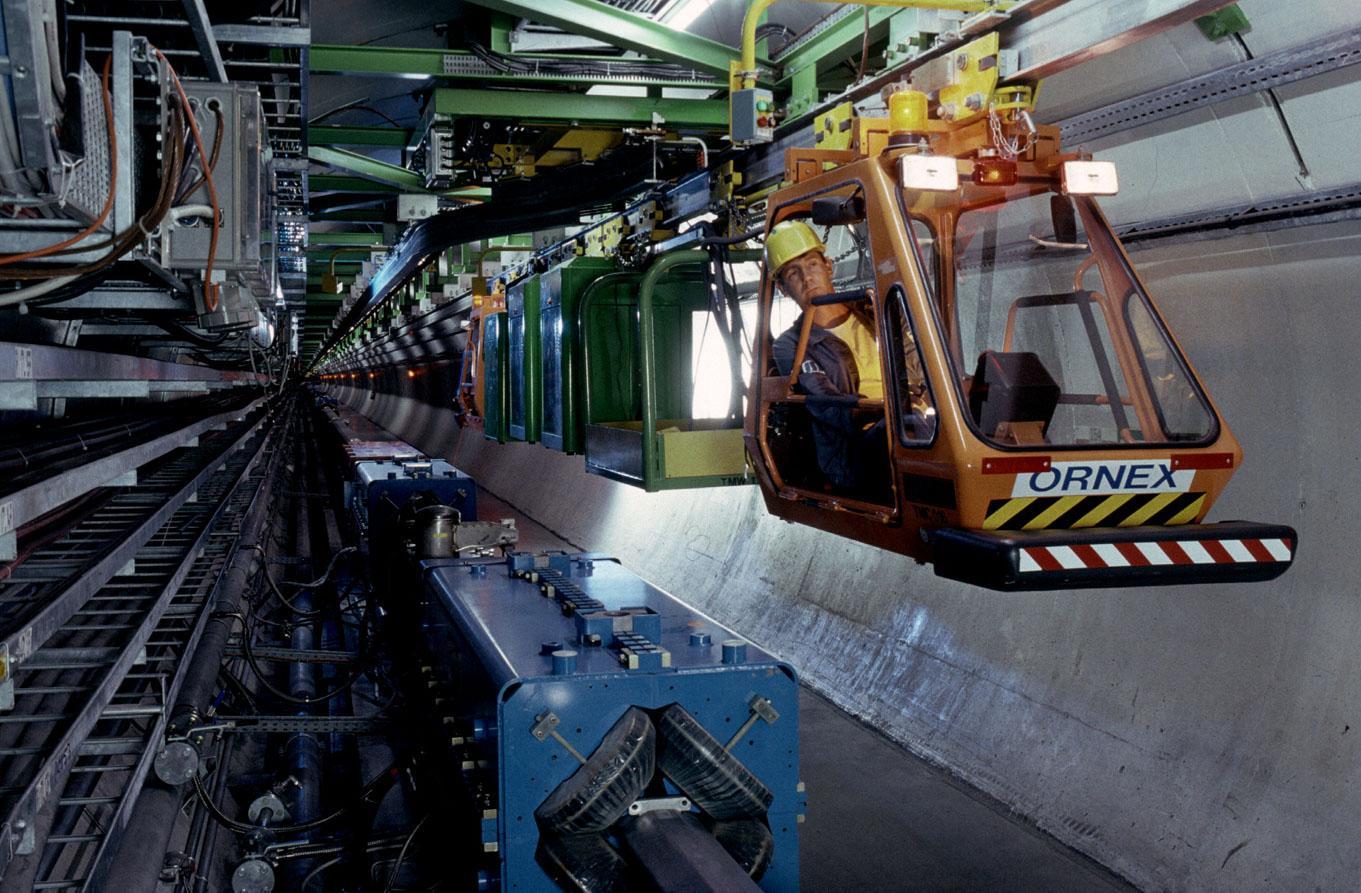
|
February 1989 – The LEP monorail | On 21 February 1989, CERN inaugurated its new monorail, suspended from the ceiling of the 27-kilometre Large Electron-Positron Collider tunnel. The trains, all named after local villages, travelled at around 12 kilometres per hour and came in three different designs to handle different cargoes. LEP was in the second phase of construction, and sixty thousand tonnes of equipment had to be installed quickly in a very narrow space. The monorail let workers and equipment move efficiently and safely. The inaugural speeches took place at different points around the tunnel and the guests, who had been warned to wrap up warmly, were treated to a ride between them on CERN’s very own metro. |
|
| This month 62 years ago… | 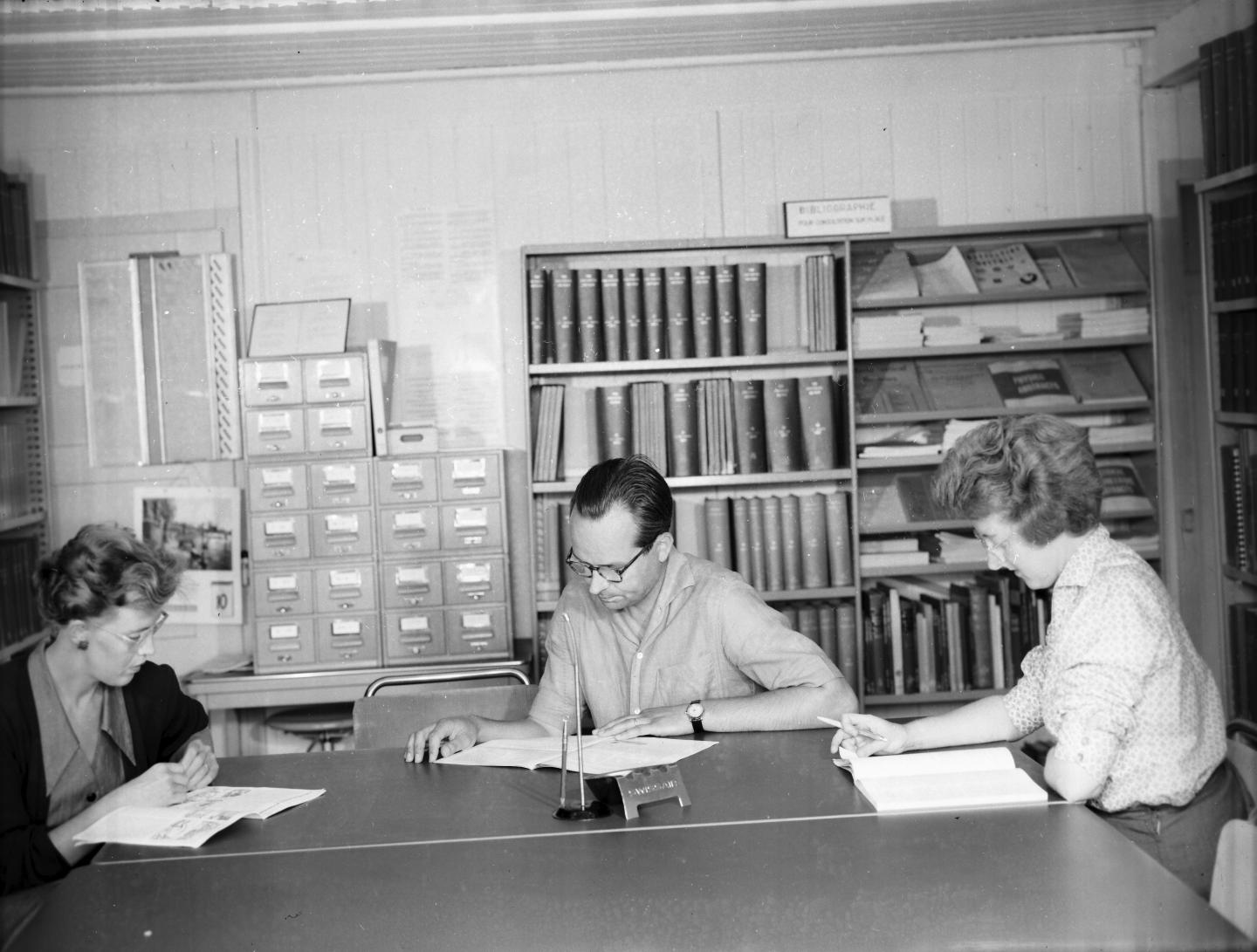
|
January 1957 – CERN’s Scientific Information Service is born | In January 1957, CERN’s newly created Scientific Information Service (SIS) was planning for the year’s big challenge – moving the Library into new premises. Three of the staff are shown here at the old premises in July. Until the end of 1956, CERN’s Library, translation team and public relations office all formed part of a single Information Service, but this had been split up, leaving around a dozen staff to handle “scientific documentation, publication and exchange of reports, associated ‘print shop’ activities and relations with the scientific press.” You can read the report on SIS’ first year here. |
|
| This month 88 years ago… | 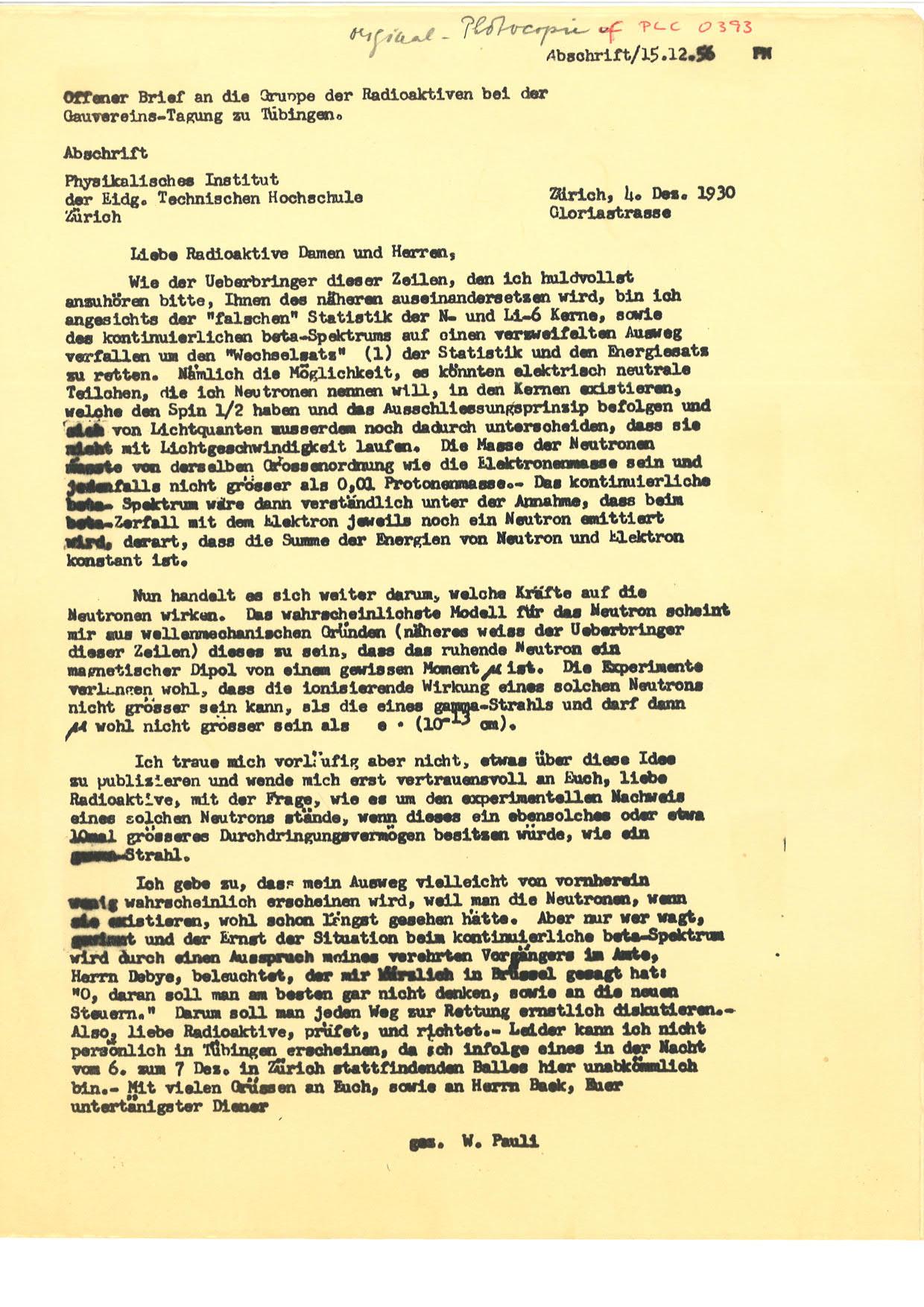
|
December 1930 - Pauli’s Neutrino letter (now in music and art!) | On 4 December 1930, Wolfgang Pauli wrote his famous letter to the ‘Dear radioactive ladies and gentlemen’ postulating a neutral particle to solve the puzzle of missing energy during beta decay. This letter forms the basis of a new work by ART(at)CREATIONS, Liebe Radioaktive Damen und Herren, featuring music composed by Petros Stergiopoulos and Oded Ben-Horin. Pauli had to wait nearly 26 years for experimental confirmation of the neutrino. As he wrote to its discoverers, Frederick Reines and Clyde Cowan, ‘Everything comes to him who knows how to wait.’ |
|
| This month 56 years ago… | 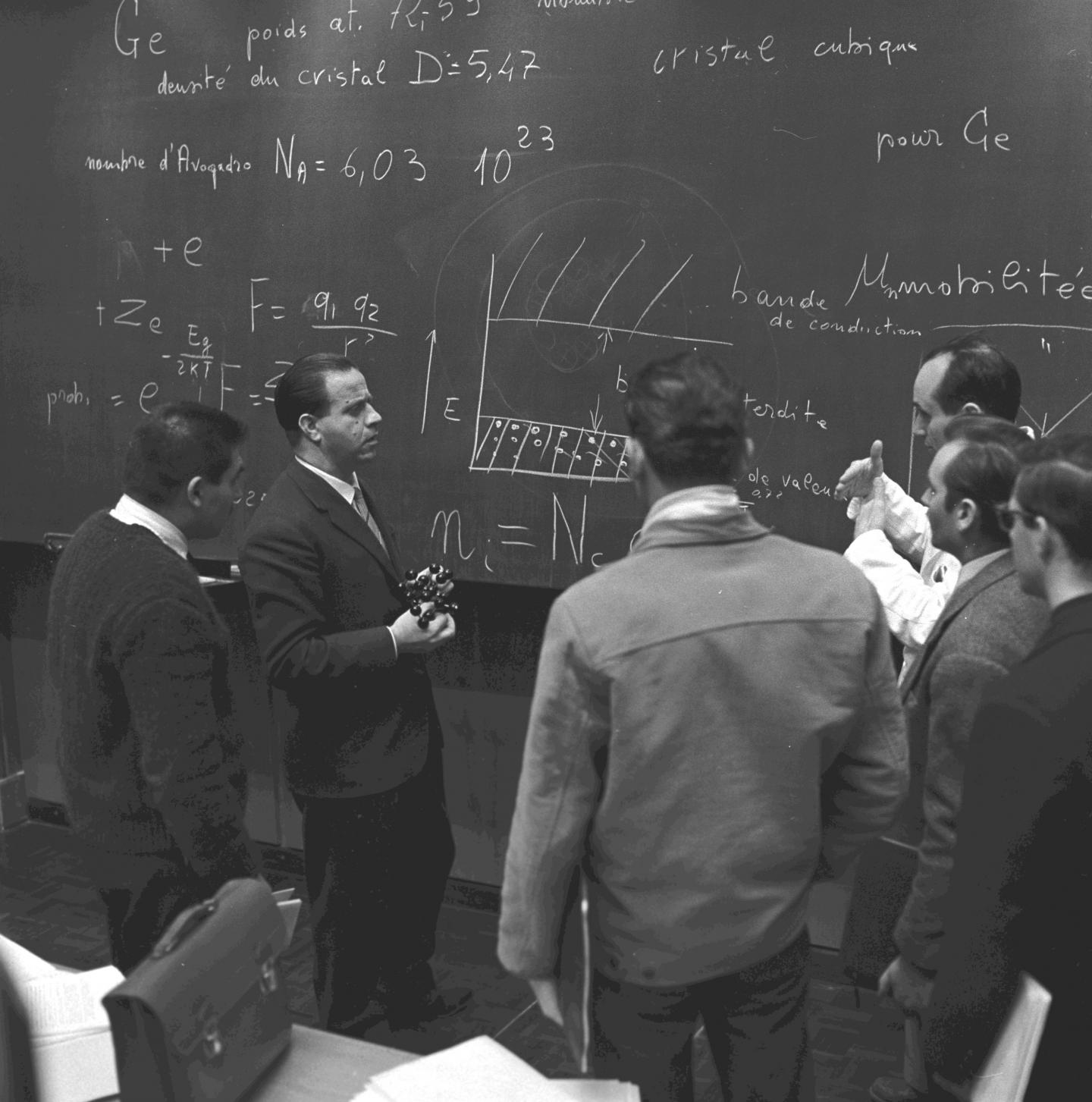
|
November 1962 - CERN’s first technical training course | Setting up CERN’s new technical training courses raised important questions. How far was it CERN’s job to provide this sort of education? Could anyone be persuaded to teach classes when they were already too busy with own work? Would they be any good at it, since most were more used to presenting conference papers and academic lectures? The training had been requested by CERN’s machine operators, workshop staff and laboratory assistants, and 279 people signed up in the first year. The courses, which included practical demonstrations and exercises, proved very popular and were extended to provide staff with specialist knowledge they could not easily get elsewhere and keep them up to date with modern techniques. Read more in the December 1962 CERN Courier, |
|
| This month 83 years ago… | 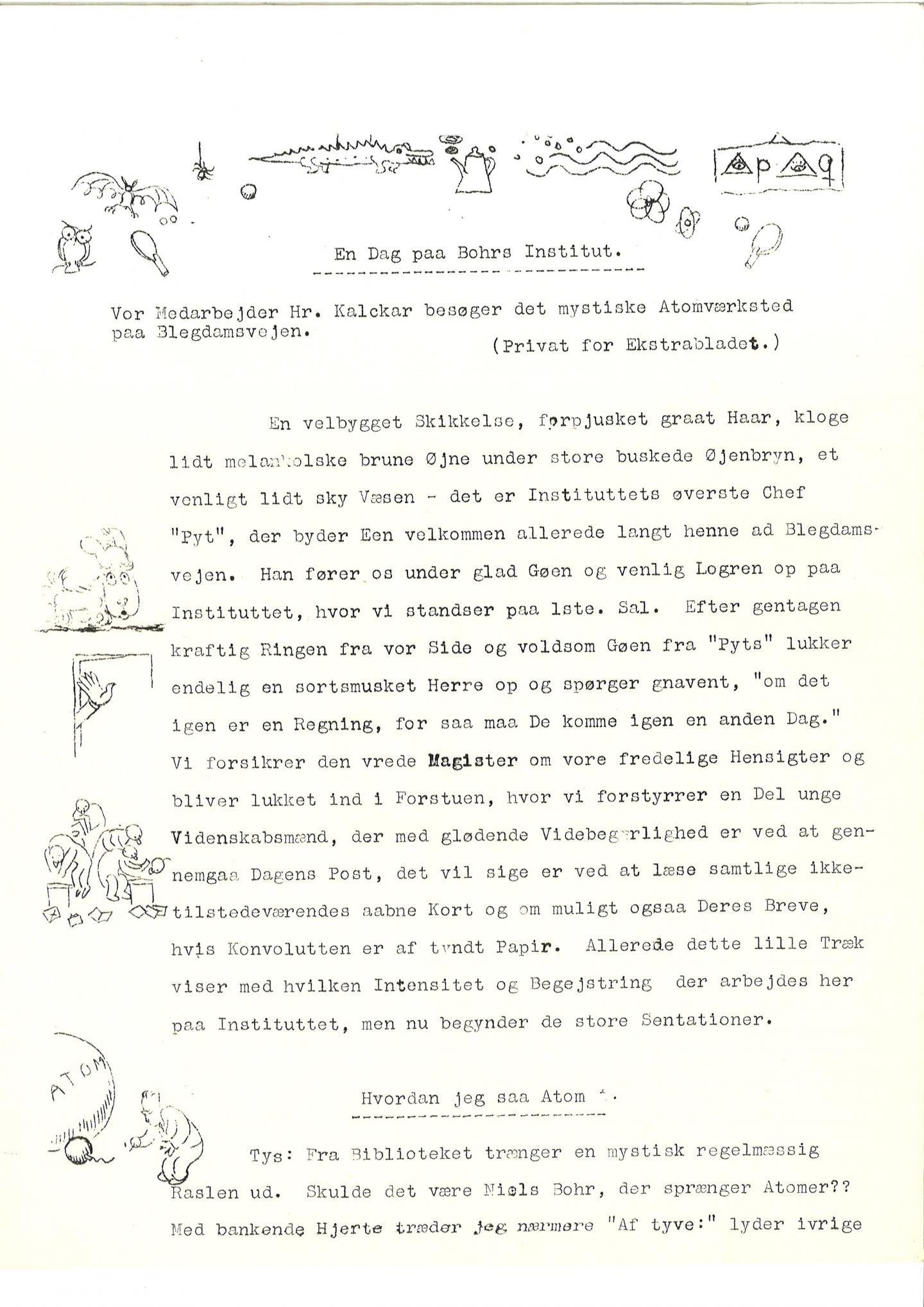
|
October 1935 - The first Journal of Jocular physics | The traditional Festschrift was abandoned for Niels Bohr’s 50th birthday, lest he should ‘feel it as his duty to read the contents and even try to learn something.’ Instead, he received the Journal of Jocular Physics. Future Director-General of CERN, Viki Weisskopf, was a major contributor. His ‘Komplementäre Philosophie des Witzes’ (Complementary Philosophy of Jokes) maintained that humour held a curved mirror to truth, giving a distorted but illuminating insight that challenged our comfortable assumptions in much the same way as one of key tenets of quantum mechanics, complementarity. Published by the Institute of Theoretical Physics (now the Niels Bohr Institute), the spoof journal contained articles in German, Danish, English, French and Japanese and espoused an attitude of ‘hopeful pessimism and serene preparedness’. Sadly, with Europe moving towards World War 2, contributions from G. Gamow, O. Klein (echoing a bellicose speech by Mussolini) and L. Rosenfeld were omitted, as ‘the possibility of misinterpretation in a political and therefore, not purely jocular sense could not be entirely excluded.’ |
|
| This month 50 years ago… | 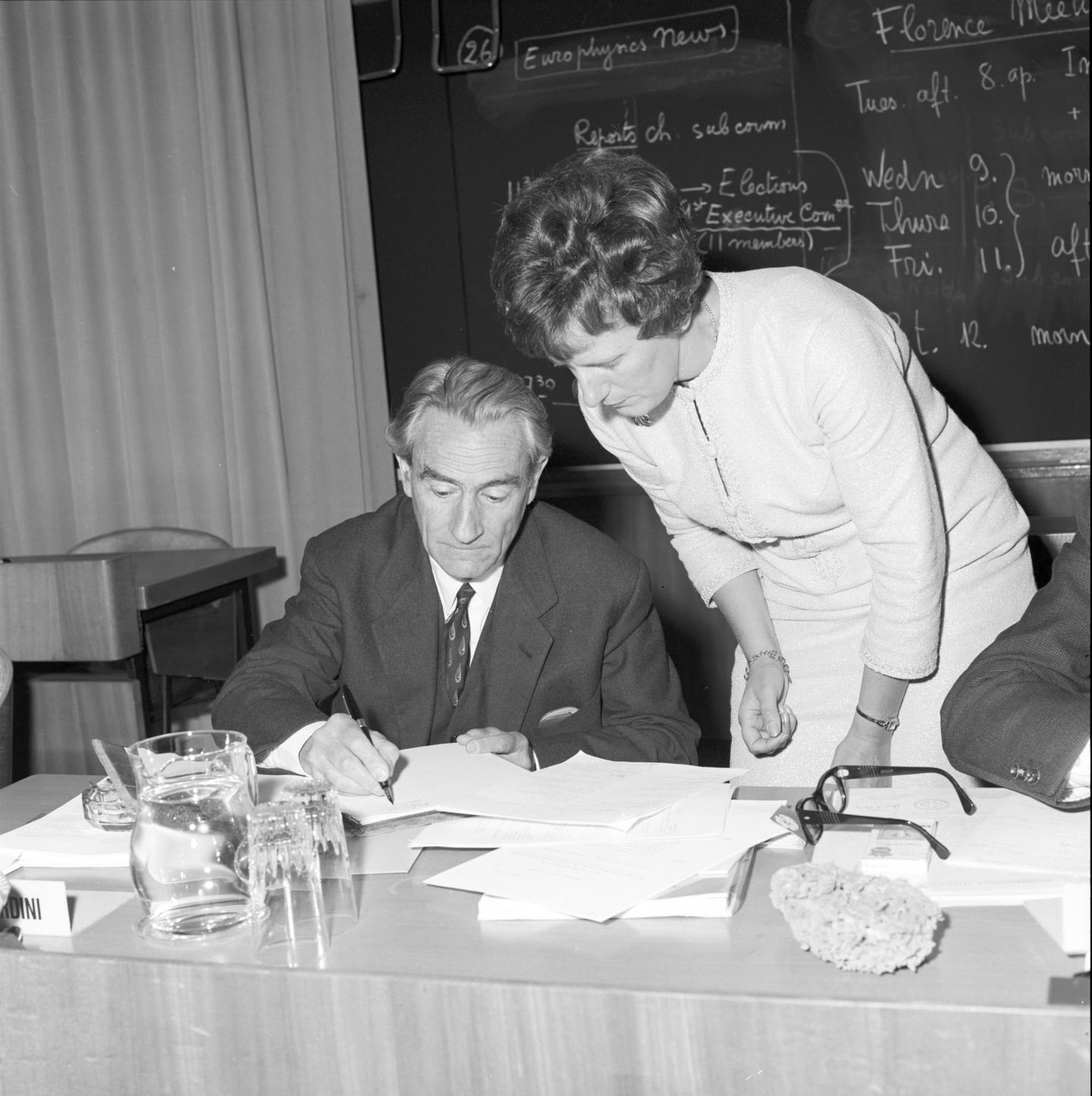
|
September 1968 – Inauguration of the European Physical Society | “The formation of the European Physical Society with such a wide membership is a further demonstration of the determination of scientists to collaborate as closely as possible in order to make their positive contribution to the strength of European cultural unity.” So said Gilberto Bernardini in his inaugural address on 26 September 1968. But it all started with a friendly dinner party in Bologna three years earlier; read Bernardini’s 18 January 1966 letter to Leon Van Hove here. More information about the history of EPS here |
|
| This month 56 years ago… | 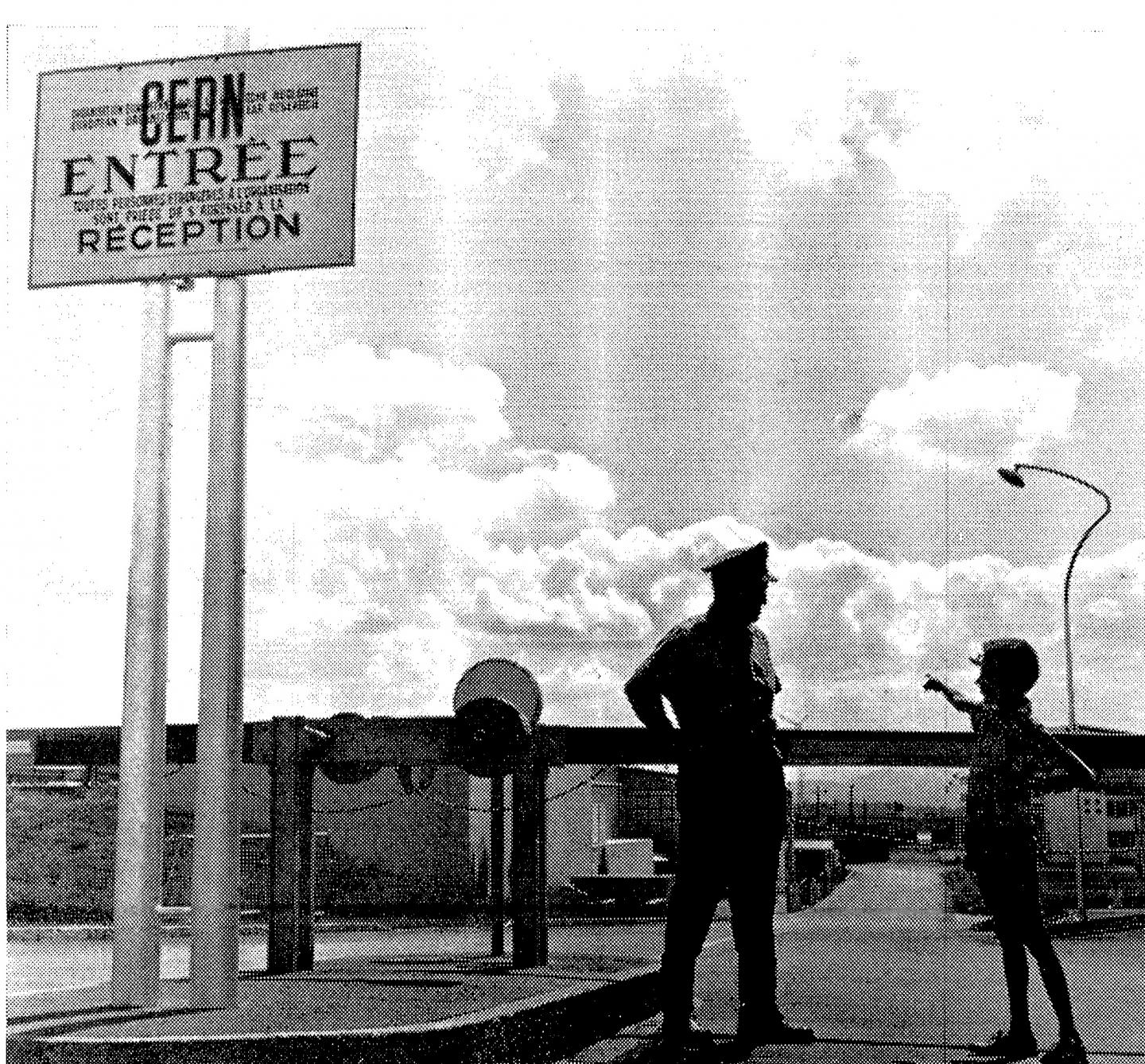
|
August 1962 - ‘May I have a look around?’ | During the summer of 1962, the CERN Photo Club and Public Information Department organized a photographic competition on the theme, ‘How a visitor sees CERN’. E. Fischer scooped a prize with an excellent colour print of the tall, white Administration building standing out against a clear blue sky. Marinus van Gulik took another approach, and another prize, with a series of photos of his son. You can see some of them in the December 1962 CERN Courier. His pictures also featured the Administration building or, as he called it, CERN’s third machine, the paper accelerator. |
|
| This month 56 years ago… | 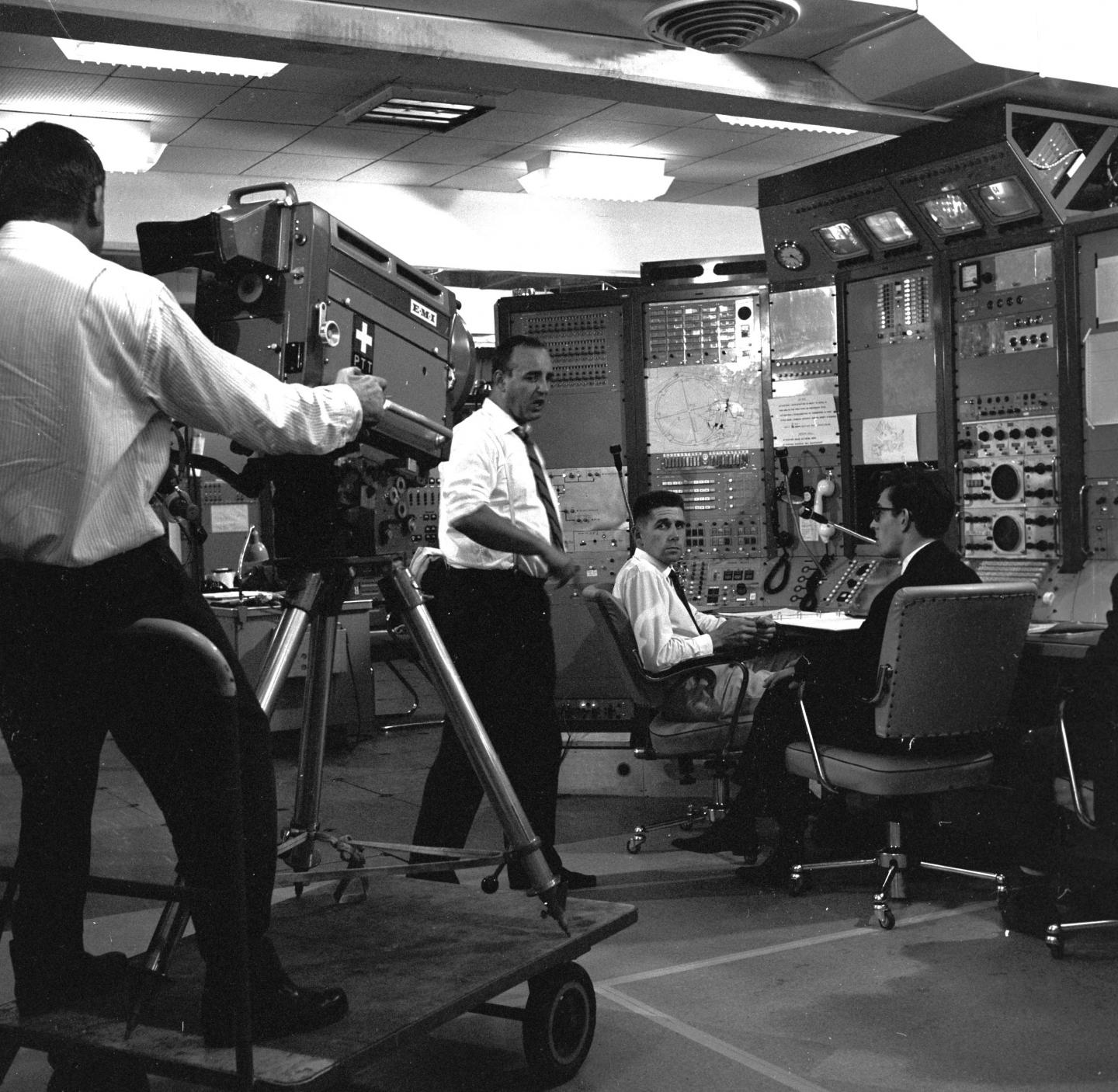
|
July 1962 – CERN to America, via Telstar | At CERN, in July 1962, 60 hours of feverish preparation culminated in 60 seconds of history-making television. On the evening of 23 July, some two hundred million viewers in Europe and North America had a short glimpse of CERN at work during the first direct transmission relaying electromagnetic waves from Europe to the USA via an artificial satellite. Telstar was an international collaboration that included NASA, AT&T, Bell Labs (who carried out the construction work) and the French and British national post offices. Read more in the CERN Courier, including why Switzerland chose to devote its one minute of allotted airtime to our laboratory; learn more about Telstar from the Smithsonian National Air and Space Museum. |
